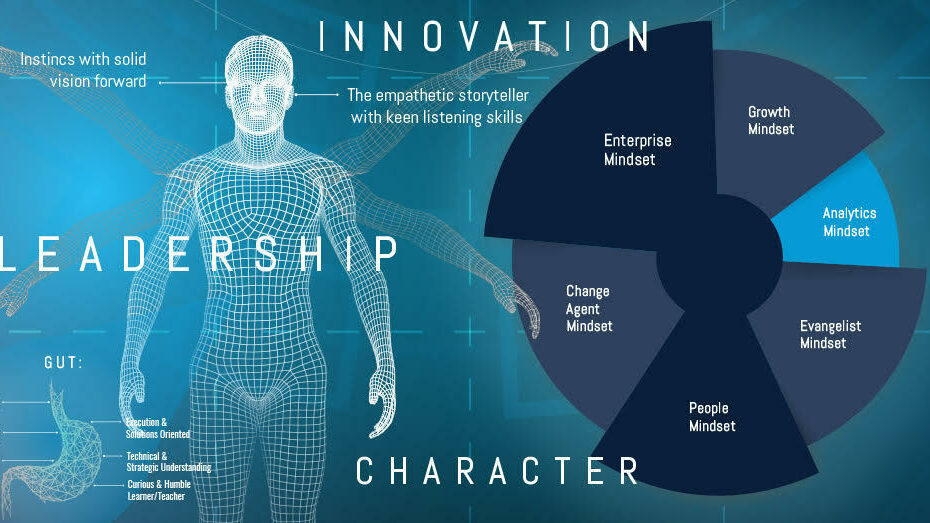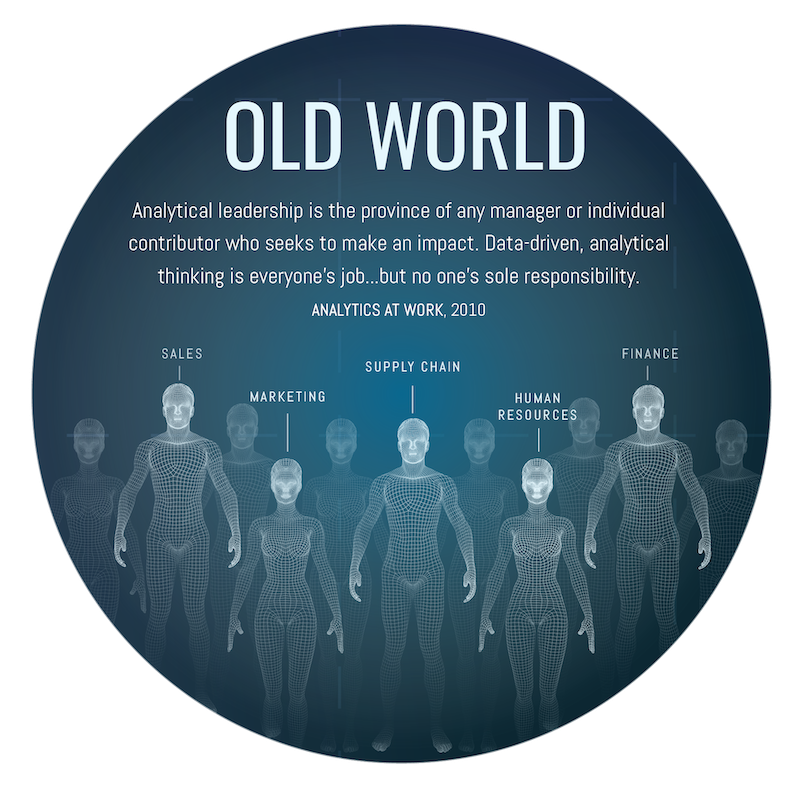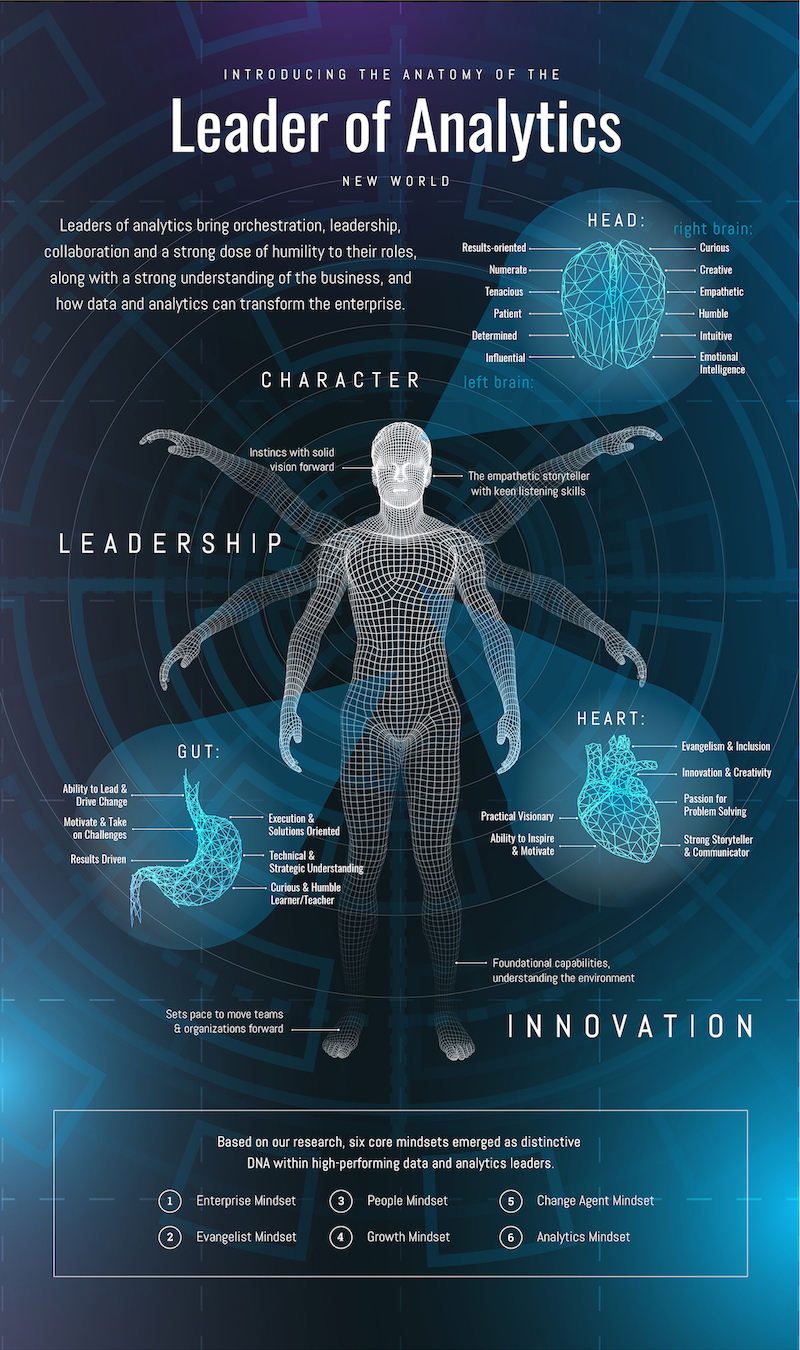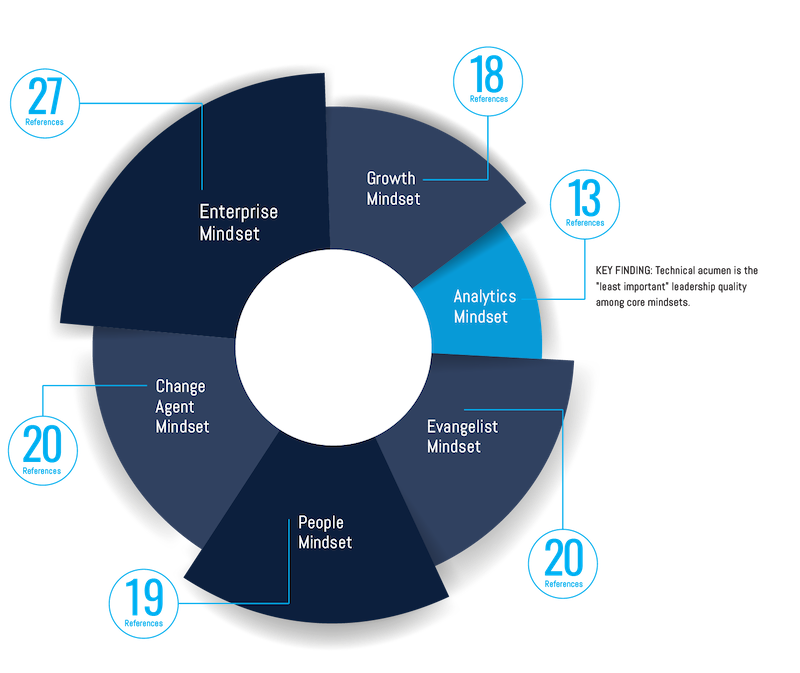
The L of DELTA
The 2010 classic Analytics at Work introduced the DELTA framework to the world. For many of us devotees, DELTA is the acronym we still have scribbled on the inside front cover of our work notebooks as a handy reference for the main elements of enterprise analytics (Download IIA’s DELTA Plus Primer for an overview of the DELTA Model and recently released DELTA Plus framework). The L of DELTA stands for leadership, and the authors Davenport, Harris and Morison summed up their description of analytical leadership in Analytics at Work this way:
Analytical leadership is not a well-understood topic in the management literature, but if you speak with people at any level who are trying to make their organizations more analytical, they'll attest to its importance. What they may not realize is that analytical leadership is not just the province of the CEO and the organization's senior-most executives, but of any manager or individual contributor who seeks to make an impact.
Back in 2010 there were very few defined senior roles with the words data, analytics, and chief in them as there are today. In other words, analytics was everyone’s job (and opportunity), that of the CEO, executives, line managers and individual contributors. In the book chapter dedicated to the L of DELTA, the authors described behaviors of traditional line/function executives and managers that made them more analytical when performing their core duties. Those included having strong people skills, being good at setting expectations, and possessing the ability to build ecosystems and hire smart analysts – all while understanding the limits of an analytics-only approach.

In the old world, analytical leadership was the province of any manager or individual contributor seeking to make an impact.
Analytical Leadership vs. Leaders of Analytics
More than 10 years later, we’re due for an updated definition of the L of DELTA that codifies the skills, background and behaviors of the dedicated data and advanced analytics leaders who are the newest members of the executive teams at many enterprises. At IIA, we’ve known for a long time that success of any enterprise analytics program correlates positively to the vision and skills of the person leading the expedition, not just the extent to which the passengers on the vessel are rowing in unison.
More to the point, it’s time to distinguish the leadership qualities from those who oversee data and analytics programs at their firms and the individual leaders who use data to drive their functions forward (sales, HR, and marketing leaders, for example). While there will surely be overlap in traits and behaviors, such as having strong communication skills, and being business-oriented and results-driven, we’re most interested in teasing out the essence of a world-class data and analytics leader. What leadership qualities are unique to the very best chief data and analytics officers? Where do we see overlap in the C-suite leadership Venn diagram, if you will, and how exactly do these traits matter most to data and analytics leaders and, perhaps, which traits are more important than others? Given the emerging importance (and prominence) of CDO, CAO, and CDAO or equivalent titles, we feel this exercise can help both data and analytics leaders identify gaps in their leadership growth and support enterprises in better defining the qualities that drive high-performing data and analytics leadership.

In the new world, leaders of analytics bring orchestration, leadership, collaboration and strong sense of humility to their roles.
An Exploratory and Descriptive Study
As we noted in the first blog in this series, all of the data and analytics leaders we’ve spoken with in the Leading Analytics Podcast play a central role in forming and leading the data and analytics capabilities at their organizations. All carry CAO, CDO, CDAO or equivalent titles and at some of the world’s most recognizable brands like Disney, IBM, McDonald’s, Campbells, FICO, Best Buy, and Yum! Brands. In seasons one and two of the podcast, we asked guests the same research questions using a semi-structured approach. Given the nature of the medium, all questions were open-ended vs. pre-coded, and planned and shared in advance with podcast guests. While there may be slight variation in how questions were delivered from episode to episode, there was a high level of consistency in the “narrative arc” of the interviews and topics explored. As any researcher (or D&A leader) will tell you, analyzing and coding semi-structured data is complex, even problematic, and we recognize the limits in codifying data and analytics leadership through this kind of qualitative research. Further, we’re sensitive to the fact that drawing up personas can lead to gross stereotypes or trap your analysis in certain biases. That being said, key themes emerged from our 20-plus conversations in seasons one and two and this second blog attempts to distill the behavior traits of high-performing data and analytics leaders into a critical mass of “mindsets.” While some of these traits do come from traditional left/right hemisphere psychology (mathematical fluency or creativity), we’re using “mindset” to group leadership qualities into broader frameworks or passion areas our guests brought up again and again – many of which are rooted in emotional states. In addition, we believe there are behavior traits even more necessary in this C-suite position than others, traits that truly distinguish good vs. great data and analytics leaders, as well as inject new points of view at the highest levels of executive leadership.
The following ranks and summarizes these mindsets in terms of consensus from our podcast guests. To unpack these mindsets, we ask the central question: Why does X mindset matter and how does it help define world-class data and analytics leadership?
1. Enterprise Mindset
“The fact of the matter is that many organizations are riddled with data debt, data silos, technology debt…transformation takes time. So how do you thread the needle between driving value in the short term, while at the same time, attracting enough investments to be able to move the organization to a better data, analytic, and technology footprint?”
– Krishna Cheriath, VP, Head of Digital, Data and Analytics, Zoetis
Why does the enterprise mindset matter and how does it help define world-class data and analytics leadership?
Striking a vision and setting a strategy that aligns with business goals and objectives proved to be the most discussed leadership quality. Behavior traits include strong business acumen and savviness, a talent for scalable and “practical innovations,” and the ability to influence key stakeholders. Coupling agility with business value is key in this realm. The pandemic elevated the role of data and analytics for many organizations, thus spotlighting the unique value a CDO or CAO can bring to executive leadership. Digital transformation has been exponentially accelerated for most legacy enterprises and those data and analytics leaders with a strong enterprise mindset have given their organizations a fighting chance to prioritize, focus, and accelerate successfully.
2. Evangelist Mindset
“We do very complex things, but we need to figure out how to make [what we do] approachable for our business partners and connect with them. I don't believe in trying to simplify everything, because I do think it's important that our business stakeholders understand the complexity of what we do. But it is important to figure out how to connect it with something that they do understand in their daily work.”
– Nicole Nelson, Senior Vice President, Data Science and Applied Machine Learning, Best Buy
Why does the evangelist mindset matter and how does it help define world-class data and analytics leadership?
Data is dead without context, without a situation to inform, support, compare, agree or deny. Data is dead without time. Stories are dead without time. The best data and analytics leaders understand the power of story, of contextualizing analytic insights and connecting them to real business problems and terminology. They understand the power of time in their stories. They understand the metaphorical and literal gumption of journeys. Journeys are dead without data and time and somebody to tell that story in language that would resonate with senior leaders and the board (see Nicole Nelson’s quote above). Top-tier CDOs and CAOs build bridges across the organization, constantly reflect on their communication with colleagues, and rally fellow leaders – and the entire enterprise – not through fancy frameworks and analytics models, but rather through rich and relatable stories that tap into the intellect and emotions of their audience. What does X mean for your customer? What does Y mean for supply chain operations and what outcome will you help them achieve? The ability to articulate complex solutions into simple terms and customizing your messaging based on audience requires empathy and patience. Empathy, patience, audience awareness – these qualities do not inform discussions about the difficulty in getting clean data or using the right machine learning techniques or the woes of scalable programming.
3. Change Agent Mindset
“There’s a difference between producing analytics and having a culture that is truly analytically driven.”
– Yatish Uchil, Co-Head of Data and Analytics Services, Global Operations and Technology, BNY Mellon
Why does the change mindset matter and how does it help define world-class data and analytics leadership?
It has been well-documented that cultural roadblocks are one of the most challenging aspects of implementing data and analytics initiatives. Even before the pandemic, most CEOs understood the importance of becoming a data-driven organization, and for anybody still not getting it, the pandemic got them over the hump. But terms like “data-driven” or “digital transformation” or “analytics maturity” are nebulous concepts for many senior leaders. They don’t really understand what that means in action. What this means for CDOs, CAOs, and CDAOs at legacy organizations, in particular, is that it is very likely the most difficult part of their job will be changing the behaviors and culture of the enterprise. How it thinks. How it makes decisions. How it asks questions. Where it goes to solve problems and why. How it works as one organism to thrive in its environment. Our guests underscored leadership qualities like tenacity, resilience, and agility. The term “courageous transformation agents” was used and nicely encapsulates the essence of this role. It takes courage to transform how an organization aligns. World-class data and analytics leaders are change agents and must bring a level of grit to their jobs that matches, even surpasses, their C-suite colleagues

Based on our research, six core mindsets emerged as distinctive DNA within high-performing data and analytics leaders.
4. People Mindset
“We need to be able to attract and develop talent…and we really need the right organizational diversity…I'm quite proud that I have a [data and analytics] organization with a 40% female ratio…and they [range from] young [data and analytics professionals] to those with many years’ experience.”
– Helena Yin Koeppl, Vice President, Global Head of Data Science and Advanced Analytics, Bayer
Why does the people mindset matter and how does it help define world-class data and analytics leadership?
Helena Yin Koeppl should feel proud of the diversity on her team. As Koeppl centered her energy on increasing her team’s diversity, she was working against benchmarks of ratios closer to 25% female and 75% male. At this point the research is overwhelming: diversity begets different viewpoints which begets creative solutions to complex problems. Of course, the benefits don’t stop there. A diverse and inclusive culture attracts diverse and inclusive talent – and diverse and inclusive talent generates psychological and fiscal ROI. It is the best of feedback loops. Koeppl would not have achieved this success without a people mindset. To state the obvious, leading a data and analytics team is hard, especially in organizations that are not digitally native. How do you build the right communities of practice? How do you attract talent? How do you build out the team? How do you develop the proficiencies that require you to function as a well-seasoned people executive? Without a people mindset, these challenges are beyond difficult, they become paralyzing. But it’s about more than just attracting and retaining the best talent in the world. It’s about being a motivational team builder. It’s about having the emotional intelligence to form, sustain, and develop a team that feels recognized, empowered, and keyed into the business. It’s about having the passion to coach and mentor a team that is navigating a relatively new field – and reality – for organizations with entrenched ways of working.
5. Growth Mindset
“Continuous learning and teaching…it's important for every leader but applies more to analytics than any other space I can think of [if we consider how fast] the landscape is evolving and maturing. Real outcomes are achieved when more groups get involved and excited to help your company become a data-driven organization, [as opposed to] only the folks with analytics in their title doing the work.”
– Saurabh Parikh, Chief Data and Innovation Officer, CONA Services
Why does the growth mindset matter and how does it help define world-class data and analytics leadership?
Some of the traits that color the people mindset feed into the growth mindset, which is another critical grouping of behaviors that propel world-class data and analytics leadership. Humility may be the most essential leadership quality here. As the D&A leader of Best Buy said: “Attract talent that knows more than you do and be comfortable not being the smartest person in the room.” To take this a step further, she embraces the null hypothesis with her team, because “it’s easy to fall in love with your own solutions…and there is [always] the possibility we might be wrong.” For Tarun Kataria at Mars, “the true driver of disruption [is not] technology…or data or analytics…it’s the unmet needs of the consumer…and you really have to be humble to question your own biases if you really want to be a disruptor.” Data and analytics leaders must be aware of their shortcomings, possess an insatiable curiosity, and internalize one of the true differentiators in D&A leadership: you learn when you teach, and being a good teacher is more important for CDOs or CAOs than any other role in the C-suite.
6. Analytics Mindset
“Obviously, if you’ve been a deep practitioner [in analytics] that can only be helpful to you…but I am not one...so I need to surround myself with people who have that deep technical acumen…in the platform space, data technologies, or data science.”
– Erika McBride, Senior Global Director of Analytics, The Dow Chemical Company
Why does the analytics mindset matter and how does it help define world-class data and analytics leadership?
It may seem silly to include an analytics mindset as important for a data and analytics leader and some definitional clarity may be in order here. As discussed, high-performing CDOs and CAOs are uniquely skilled at taking their team’s work and translating it in way that resonates with the business. Bridging this gap requires both analytics and enterprise mindsets. And, of course, you’re probably not going to find too many CAOs out there who don’t possess a general interest or passion for data and analytics. That being said, the data and analytics leaders we interviewed de-emphasized the importance of a technical background or deep knowledge of quantitative methods. There were enough references to consider it a core mindset, but there was far more discussion around the other mindsets listed above. This trend will likely continue as more organizations commit to the data and analytics function sitting on the business-side of the house. But this mindset also includes things related to the ethics of AI or biases in analytical models – and some leaders did emphasize trustworthiness, integrity, and the standards driving their data and analytics teams as core leadership qualities. As one guest put it: “What I say to my team is if you think about your work being written as a headline…would a customer feel good about the application in that headline? If not, then we probably shouldn’t do it.”
Now for the Flip
None of these mindsets matter without situational awareness. Cameron Davies, Chief Data Officer, Yum! Brands, dissected this brilliantly in his interview. For Davies, any enterprise must begin with: “What am I trying to accomplish? And therefore, what are the most important skillsets and leader definitions that I need for my organization?” Depending on the analytics maturity of your organization, do you need a builder/influencer or an expert leader in a specific space? Depending on your data maturity, you may need someone who actually understands data stacks from an engineer’s perspective as opposed to analytics solutions. And what is the maturity of the broader organization? Do you need somebody who’s more of a builder, convincer, influencer, or what Davies calls a “mature maintainer”?
With Davies’s insights in place, we can still call attention to the unique skills, temperament, and backgrounds present among today’s analytics leaders that make for an entirely new pedigree of leader who is blending traditional disciplines with new attributes to be successful.
In our next Leading Analytics blog, we’ll share both the common and innovative approaches data and analytics leaders are taking to organizing their teams for success.